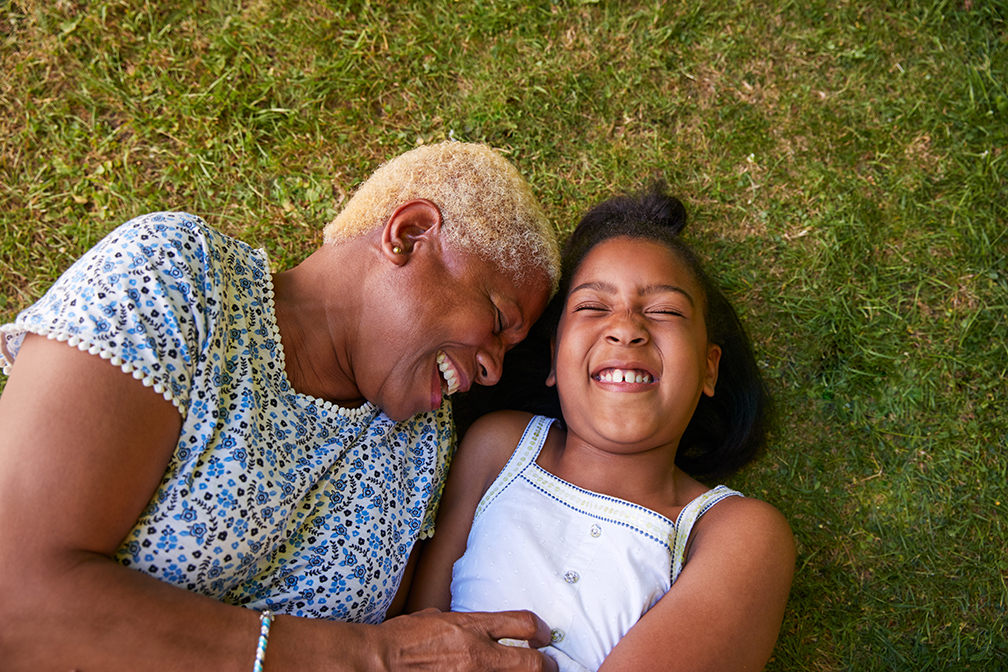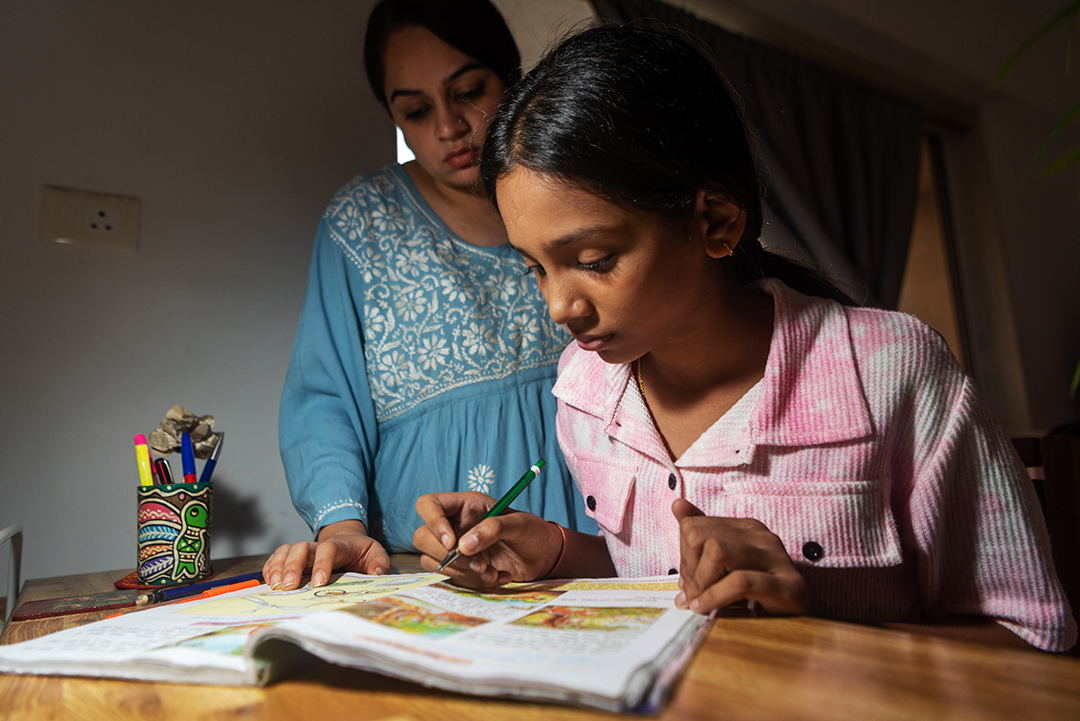A 2024 examine by Harrop and colleagues displays how the panorama of autism prognosis for females has advanced. Drawing on greater than 10,000 diagnostic information from the TEACCH Autism Program in North Carolina, spanning the years 2000 to 2021, the examine reveals a gradual enhance within the proportion of females recognized as autistic. Though the male-to-female ratio narrowed over this era, the examine discovered that females are nonetheless identified later than males, notably these with out co-occurring mental incapacity. These findings level to each progress and protracted challenges. Whereas diagnostic pathways have gotten extra inclusive, late recognition stays a priority, highlighting the continuing want for approaches that acknowledge the variety of autistic expertise.

Extra autistic women and girls are being identified, however well timed recognition stays an pressing precedence.
Reframing Gender in Autism
Autism has lengthy been framed as a predominantly male situation, an concept that has influenced analysis, scientific observe, and cultural perceptions. Conventional diagnostic standards and evaluation instruments have been developed primarily based on research of boys and males, with male-typical traits seen because the gold normal (Loomes et al, 2017, Bargiela et al., 2016; Lai et al., 2022)). Because of this, many autistic females have been missed, misunderstood or mislabelled, and their assist wants usually unmet. Over the past decade, this narrative has began to shift. Advocates and researchers have drawn consideration to the various ways in which autism will be expressed, notably amongst these whose traits don’t match conventional descriptions. Research recommend that autistic females are extra seemingly to make use of methods comparable to camouflaging or masking in social conditions and will develop pursuits and routines that differ from autistic male shows (Bargiela et al., 2016; Lai et al., 2017; Hull et al., 2020). It has been urged that these variations have contributed to delayed or missed diagnoses, and a way of being misunderstood or unsupported inside healthcare and academic programs. The work by Harrop and colleagues builds on this altering understanding, asking whether or not extra autistic females are being recognised as we speak than prior to now. It additionally explores whether or not modifications in diagnostic observe, together with the adoption of broader standards, have influenced who receives an autism prognosis and at what stage of life.

Embracing the variety of autistic experiences challenges outdated stereotypes and opens new pathways to assist.
What Did the Examine Discover?
The TEACCH Autism Program, serving the whole state of North Carolina, supplied a singular window into diagnostic patterns over twenty years. The analysis group reviewed the information of greater than 10,000 individuals identified between 2000 and 2021. This massive, community-based pattern included each youngsters and adults and captured a spread of lived experiences throughout gender, age, and mental profiles. One of the vital hanging findings is the clear elevated development within the proportion of females receiving an autism prognosis. Within the early 2000s, the male-to-female diagnostic ratio stood at greater than 5 to at least one. By 2021, that hole had narrowed, with simply over three males identified for each feminine. This development shouldn’t be distinctive to North Carolina; related shifts have been reported in different areas, reflecting rising consciousness amongst clinicians, households, and communities. But, the examine highlights that autistic females are nonetheless identified in a while common than their male counterparts. This delay was much more pronounced amongst females with out co-occurring mental incapacity, suggesting that extra much less “basic” shows might proceed to go unrecognised in early childhood. A good portion of females acquired their first autism prognosis in adolescence and even maturity, a sample far much less frequent amongst males. The analysis additionally explored the potential affect of adjusting diagnostic standards, notably the transition from DSM-IV to DSM-5 in 2013. Apparently, the evaluation discovered that the rise in feminine diagnoses was not merely a results of broader definitions or official tips. Slightly, it seems that wider societal consciousness, enhanced scientific sensitivity, and evolving conceptions of what autism can appear to be have performed a bigger position.

Altering diagnostic patterns replicate not solely new standards however deeper shifts in understanding and consciousness.
What Do These Findings Imply for Autistic Females and Their Communities?
For a lot of autistic individuals, early recognition will be transformative, opening the door to assist, group, and a optimistic sense of identification. The narrowing of the gender hole in prognosis indicators an vital step towards fairness, but the continued delays for females elevate important questions on how autism is recognised and understood. Harrop and colleagues level to a number of explanation why autistic females are nonetheless much less prone to be identified early. One issue is that evaluation instruments {and professional} coaching usually stay anchored in male-centric assumptions, resulting in missed or mistaken identification. Many autistic women and girls develop methods of navigating social conditions, typically masking their variations at nice private price. Others might current with pursuits or coping methods that don’t match scientific expectations. In some circumstances, the presence of co-occurring psychological well being circumstances comparable to nervousness or ADHD can additional obscure the image, leading to “diagnostic overshadowing.”
For individuals who are recognized later in life, the journey to prognosis will be marked by frustration, misunderstanding, and a way of isolation. Nevertheless, many late-identified autistic ladies describe their prognosis as a second of readability and self-acceptance and a possibility to reframe previous experiences and entry new types of assist. The examine underscores the necessity for professionals to pay attention deeply to the voices and tales of autistic females, and to make sure that identification shouldn’t be restricted by outdated fashions or stereotypes.

Listening to lived expertise and difficult assumptions are keys to well timed, affirming prognosis.
Constructing a Extra Inclusive Future
The authors of the examine are clear that whereas substantial progress has been made, vital work stays. To make sure that all autistic individuals, no matter gender, have entry to well timed, correct, and affirming prognosis, a number of steps are wanted. Skilled coaching should proceed to evolve, by coaching clinicians to recognise the total spectrum of autistic shows and to maneuver past inflexible classes. Evaluation instruments must be refined and validated to seize variety throughout age, gender, and cognitive profile. The views of autistic females and non-binary individuals must be included at each stage of analysis, coverage, and observe. Their insights are very important for designing helps which might be actually conscious of the wants and preferences of these they’re meant to serve. Future analysis ought to proceed to discover the elements that contribute to delayed or missed diagnoses, with explicit consideration to how intersections of gender, race, and sophistication form these experiences.

A neurodiversity-affirming future recognises each individual’s strengths and challenges.
Conclusions
The final twenty years have introduced significant change in how autism is recognised and identified amongst females. The narrowing of the diagnostic gender hole displays each a higher consciousness and acceptance, and the persistence of late identification. By committing to ongoing studying, difficult stereotypes, and centering the voices of autistic individuals themselves, researchers, clinicians, and advocates can assist create a greater understanding of variety.
The place subsequent?
This convention, led by Dr. Clare Harrop shares the newest analysis tracing the developmental pathways of autistic women and girls, from early childhood by means of to maturity. As autism diagnoses in females rise and the gender hole continues to slender, understanding their distinct profiles and experiences has by no means been extra vital. Dr Harrop explores present proof on diagnostic patterns, the phenomenon of late prognosis, and life experiences which may be uniquely feminine, highlighting the important gaps that also stay. Important for professionals concerned about a deeper, extra inclusive understanding of autism throughout the lifespan.
Use the interactive programme beneath to realize an outline of the subject, meet the speaker, check your information, and a complete lot extra!
References
Bargiela, S., Steward, R., & Mandy, W. (2016). The experiences of late-diagnosed ladies with autism spectrum circumstances: An investigation of the feminine autism phenotype. Journal of Autism and Developmental Problems, 46(10), 3281–3294. https://doi.org/10.1007/s10803-016-2872-8
Harrop, C., Tomaszewski, B., Putnam, O., Klein, C., Lamarche, E., & Klinger, L. (2024). Are the diagnostic charges of autistic females growing? An examination of state-wide tendencies. Journal of Baby Psychology and Psychiatry, 65(7), 973–983. https://doi.org/10.1111/jcpp.13939
Hiller, R. M., Younger, R. L., & Weber, N. (2014). Intercourse variations in autism spectrum dysfunction primarily based on DSM-5 standards: Proof from clinician and instructor reporting. Journal of Irregular Baby Psychology, 42(8), 1381–1393. https://doi.org/10.1007/s10802-014-9881-x
Hull, L., Petrides, Ok. V., Allison, C., Smith, P., Baron-Cohen, S., Lai, M. C., & Mandy, W. (2020). “Placing on my finest regular”: Social camouflaging in adults with autism spectrum circumstances. Journal of Autism and Developmental Problems, 50(7), 2519–2534. https://doi.org/10.1007/s10803-019-03965-9
Lai, M.-C., Lin, H.-Y., & Ameis, S. H. (2022). In the direction of equitable diagnoses for autism and attention-deficit/hyperactivity dysfunction throughout sexes and genders. Present Opinion in Psychiatry, 35(2), 90–100. https://doi.org/10.1097/YCO.0000000000000767
Lai, M. C., Lombardo, M. V., Ruigrok, A. N., Chakrabarti, B., Auyeung, B., Szatmari, P., & Baron-Cohen, S. (2017). Quantifying and exploring camouflaging in women and men with autism. Autism, 21(6), 690–702. https://doi.org/10.1177/1362361316671012
Loomes, R., Hull, L., & Mandy, W. P. L. (2017). What’s the male-to-female ratio in autism spectrum dysfunction? A scientific assessment and meta-analysis. Journal of the American Academy of Baby & Adolescent Psychiatry, 56(6), 466–474. https://doi.org/10.1016/j.jaac.2017.03.013
Russell, G., Stapley, S., Newlove-Delgado, T., Salmon, A., White, R., Warren, F., & Ford, T. (2021). Time tendencies in autism prognosis over 20 years: A UK population-based cohort examine. Journal of Baby Psychology and Psychiatry, 63(6), 674–682. https://doi.org/10.1111/jcpp.13505
Sedgewick, F., Hill, V., Yates, R., Pickering, L., & Pellicano, E. (2016). Gender variations within the social motivation and friendship experiences of autistic and non-autistic adolescents. Journal of Autism and Developmental Problems, 46(4), 1297–1306. https://doi.org/10.1007/s10803-015-2669-1


